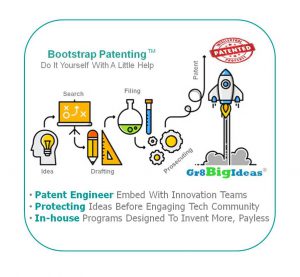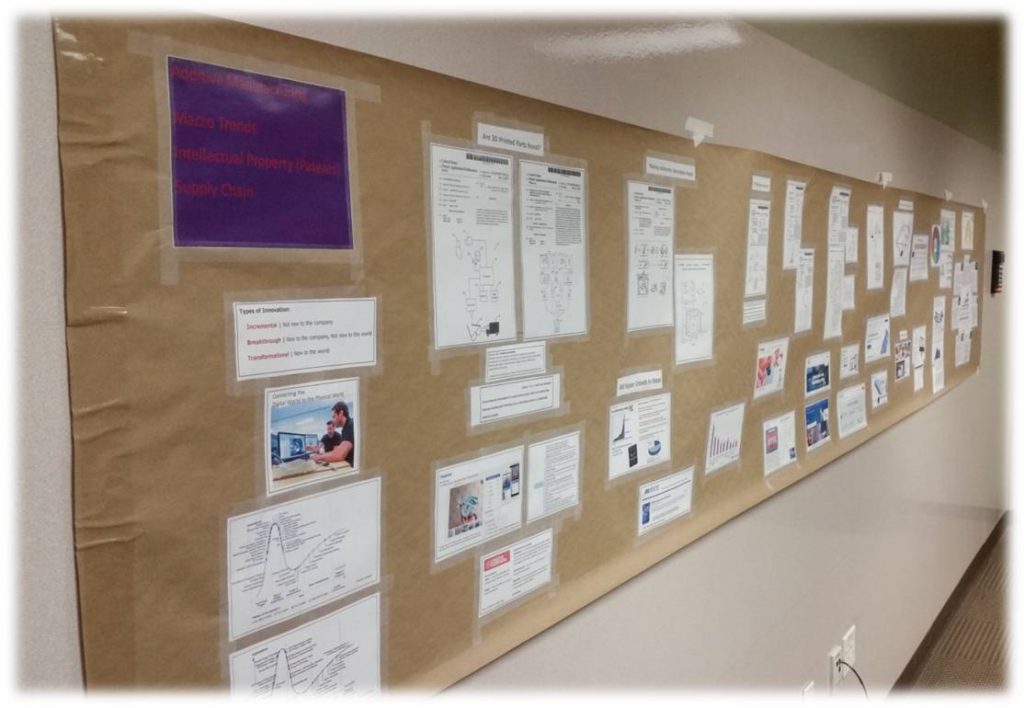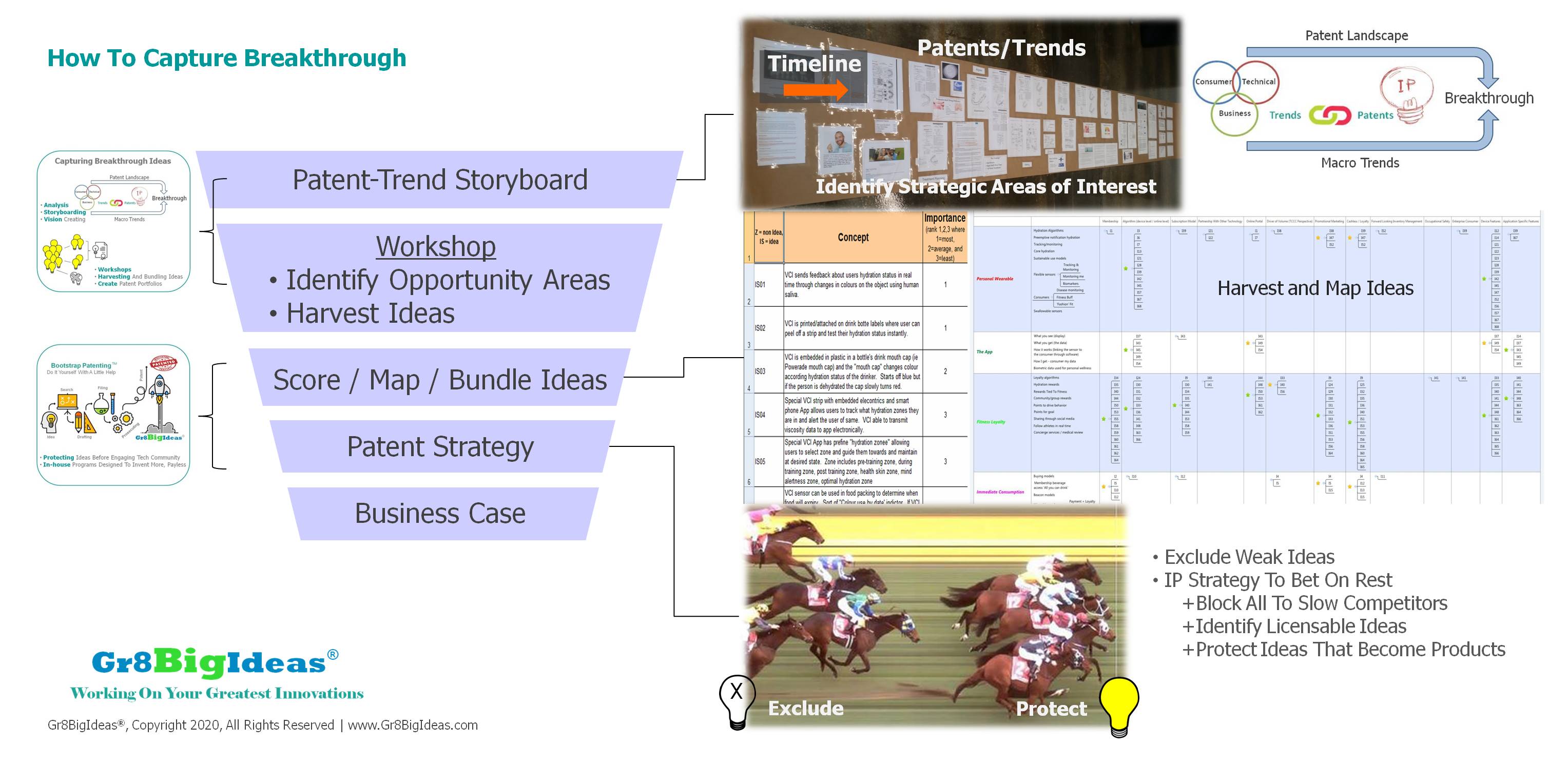 While you have your smartest people working hard on the new product, stop and think about what is getting left behind. Who harvests the ideas and diligently examines how each can be used to create a competitive advantage for your company?
While you have your smartest people working hard on the new product, stop and think about what is getting left behind. Who harvests the ideas and diligently examines how each can be used to create a competitive advantage for your company?
Of the many ideas your team generates, they select few to pursue. The team most certainly had other ideas some of which might trip-up the competition's future innovation opportunities. Who is tasked with evaluating ideas to license or block the competition operating in your innovation space or markets?
There is a better way, while driving product development, to effortlessly use your innovation team's ideas to create a broader competitive advantage for your company.
Patent Engineer | A clever entrepreneur cloaked as an engineer, with patenting skills, who enjoys embedding with innovation teams to harvest ideas, refine concepts, and create patent portfolios which block competitors, create licensing opportunities, and protect products and services.
Patent Engineers (the good ones) have the uncanny ability to speak multiple business languages like marketing, engineering, finance, IT, and corporate executive to draw insights out of people, refine them into breakthrough ideas, and effectively communicate them within an organization.
With a carrot and a stick, Patent Engineers can herd the organizational cats when needed and use patent strategies to lead consensus to strong patentable ideas that create a competitive advantage for the company and bundle other ideas into licensable or competition blocking patent portfolios.
Remember in patent law, a patent gives you the right to exclude others from making, using, or selling. It follows that the more ideas you can exclude your competition from making, using, or selling in the spaces and markets you do business in the better.
I have put together a list of 10 reasons you should embed a Patent Engineer in your innovation team and leverage their skills throughout your innovation process:
 LEARN What's Possible
LEARN What's Possible
1. A patent strategy should be an active part of your innovation process and happen as close as possible to the innovation team doing the work. Legal functions that house lawyers or rely on outside counsel is not the same as an entrepreneurial Patent Engineer leading meetings and being an active innovation team member.
2. Letting ideas slip away | The more groups, within an organization (i.e. engineering, marketing, finance, IT, etc.), that are working on a project, the more likely it is that some of the best ideas and business models will slip away through the cracks. A Patent Engineer works cross-functionally to gather, refine, inventory, and protect not only ideas but business models that are of value to all groups.
3. Avoiding surprises by proactively reviewing competitor's patents that could have an impact on projects, markets, products, and the company. When needed working with Legal counsel and the innovation team to make sure the freedom to operate is maintained.
EXPLORE The Best Approaches
4. A Patent Engineer can embed and work closely with an innovation team harvesting ideas, mentoring team members on strategic innovation, and refining small concepts into big ideas. While most people on a team have ideas, often not every idea gets heard, and not every team member is good at presenting their ideas compellingly and convincingly. Patent Engineers can work with every team member ensuring that every voice is heard and idea captured.
5. Facilitated workshops, done well, bring groups of people together and in an organized fashion explore opportunity areas. With a Patent Engineer on the team, workshops can happen more frequently and be wide-ranging, such as to seek new product ideas, to identify industry-disrupting ideas, sessions to harvest licensing ideas to adjacent industries, or workshops which harvest ideas to out-right block competition. You get the idea.
6. While the new product team is heavily engaged in a project, lots of sub-ideas fly around, many can be on how to make the product or service better in future versions. A Patent Engineer can capture, inventory, and consider if and how each idea should be protected. After all, your team is only working one version now when there are likely many future versions in their heads.
7. Making choices | During design and development, there is often more than one approach, product solution, or business model to choose from. Companies tend to select the configurations and models that don't disrupt or cannibalize current product lines. These might not be the best choices your customers want, but rather just selected to create organizational compromise. Consideration should not only be given to the best and next best alternatives but also to which are patentable and afford a competitive advantage even if not selected to be pursued into a commercial product or service at this time.
ENGAGE On All The Best Opportunities
8. Picket fences | Executives often talk about creating picket fences of patents to protect and defend against competitive threats. The term picket fence is a reference to creating patented idea boundaries to prevent unwelcome entrants into your innovation space or market. This work should be done in a cost-efficient manner by a Patent Engineer who is entrepreneurial and very crafty. You need someone who will spend as much time as it takes to fully map and develop the patent portfolios which create the most valuable fence.
9. Creating patents for licensing | Often discussed but seldom acted upon, consideration for licensing to other non-competitive and adjacent companies should be undertaken. This can entail market research, developing a company target list, inventing ideas that might align nicely with a target company's products, and good old fashion outreach and relationship building, including working with Legal counsel and company executives. This work and relationship building is something a good Patent Engineer enjoys.
10. Bootstrapping just makes sense | To scale a patent program you have to have an approach and strategy to patent more ideas at the lowest possible cost. An In-house program led by a Patent Engineer to cost-efficiently harvest ideas, refine concepts, and create patent applications is an ideal way to build portfolios of patents that most likely would otherwise be cost-prohibitive using external pay-by-the-hour options.
Ways we can help you:
-
-
- Drafting, filing, and prosecuting patent applications
- Embedding with innovation teams to harvest, refine, and protect ideas
- Identifying patentable ideas within startup technologies
- Landscaping markets to identify new opportunities
- Developing patent strategies for products and startup
- Managing the patent creation process from concept to product launch
- Searching ideas for prior art patents
- Reviewing prior art patents with product development teams
- Building IP for VC/PE portfolio companies
#patents #patentengineering #startups #entrepreneurs #breakthrough #intellectualproperty #corporateinnovation #innovation











 LEARN What's Possible
LEARN What's Possible




